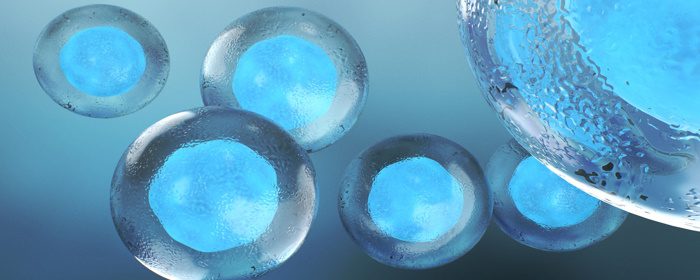Mesenchymal stem cells (MSCs) have been widely used in a number of applications designed to aid in the regeneration and healing of human tissue. Prized for their multipotent capacity to differentiate into a variety of other specific cell types, MSCs have consistently demonstrated the ability to seek out damaged tissue while also reducing inflammation and promoting healing.
Recently, the discovery of a specific type of MSC known as circulating mesenchymal stem cells has demonstrated increased potential for the use of MSCs in the regeneration, repair, and engineering of tissue throughout the body.
Circulating MSCs demonstrate characteristics similar to MSCs that are derived from bone marrow and are typically found in very low concentrations in healthy individuals. While these specific MSCs have demonstrated the ability to migrate to the site of damaged or injured tissue like other MSCs, what makes circulating MSCs so interesting to researchers is their distinct genetic profile – especially when compared to bone marrow-derived stem cells (BM-MSCs).
Xu and Li’s review provides a summary of the basic knowledge of circulating MSCs, their potential clinical applications, and the issues of using allogeneic MSCs for clinical therapy.
While these circulating MSCs, also known as peripheral blood-derived MSCs (PB-MSCs), have great potential in the field of tissue engineering and regeneration, they are found in very low quantities within the human body. As a point of reference, Xu and Li point out that the frequency of BM-MSCs in humans under normal conditions is very low and ranges from 1 in 104 to 1 in 105. Compared to BM-MSCs, the concentration of circulating MSCs is even lower, typically around 1 in 108.
Despite their low numbers, researchers have successfully identified and collected PB-MSCs in both animal and human models. In both scenarios, PB-MSCs demonstrated characteristics of cell proliferation and multi-differentiation potential that are similar to those observed in BM-MSCs. In addition, and adding to their potential, PB-MSCs are plastic-adherent, have multi-differentiation potential, and demonstrate the ability to differentiate into a variety of cells.
Adding to the benefits described above, and unlike stem cells harvested from embryonic sources, PB-MSCs are not attached to ethical concerns. In addition, numerous research studies have demonstrated the use of MSCs in a variety of applications, including cardiovascular, bone, and cartilage repair have resulted in general significant improvements in tissue healing and regeneration.
To date, studies specific to circulating MSCs are rare. However, Xu and Li highlight that circulating MSCs, while originally found in the bone marrow and other sources throughout the body, are a special subset of MSCs found in circulation. While additional study is required, early research seems to indicate that the release of these circulating MSCs is tightly controlled by a variety of systematic and local factors, including inflammatory cytokines, hormones, and a variety of growth factors.
There is increasing evidence that indicates MSCs are immunosuppressive cells and that allogeneic MSCs may be used with similar therapeutic efficacy to autologous MSCs. Considering this, Xu and Li conclude that allogeneic transplantation seems to be more promising and a way to ensure that patients can receive treatment at the best time and without significant fear of rejection.
As research continues to explore the potential benefits and drawbacks of circulation MSCs, the authors point out that a lack of standard procedures for therapeutic MSC administration remains a critical issue for the clinical application of MSCs. These critical issues need to be addressed through carefully designed animal and clinical trials before clinical applications of MSCs can be used in patients with certain diseases.
Source: “Circulating mesenchymal stem cells and their clinical implications.” https://www.sciencedirect.com/science/article/pii/S2214031X1300048X.


 St. Petersburg, Florida
St. Petersburg, Florida
